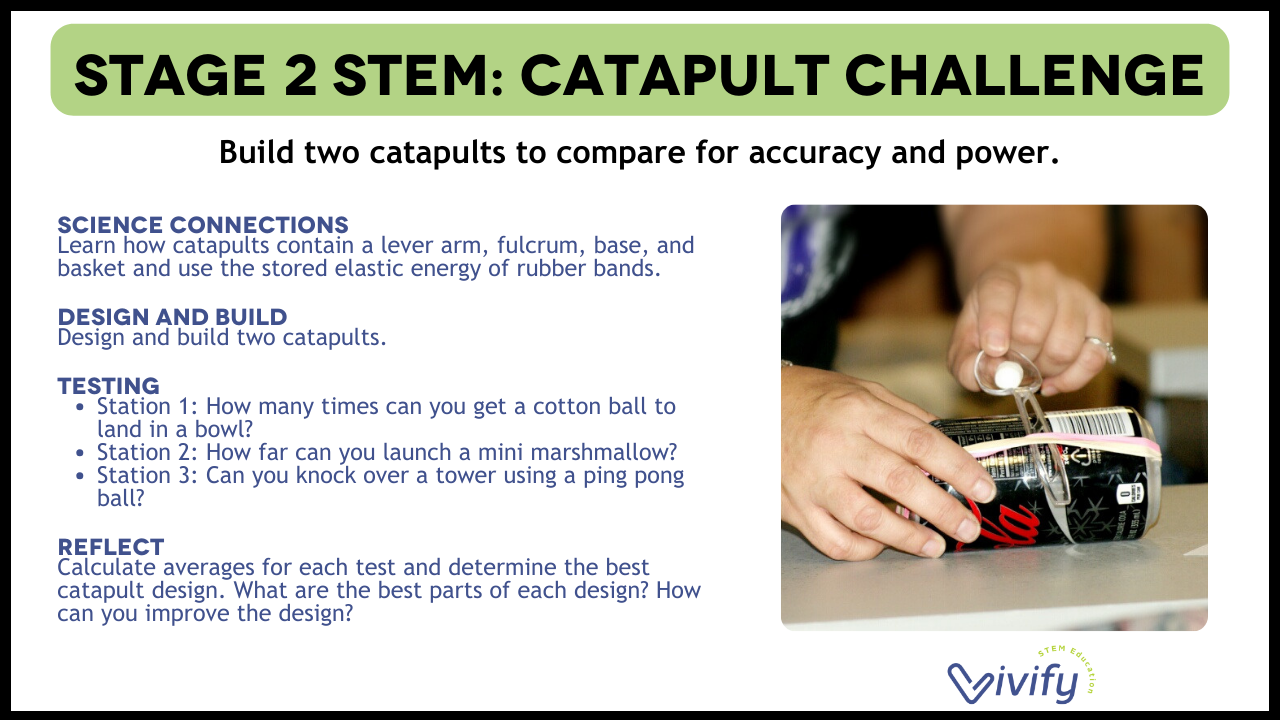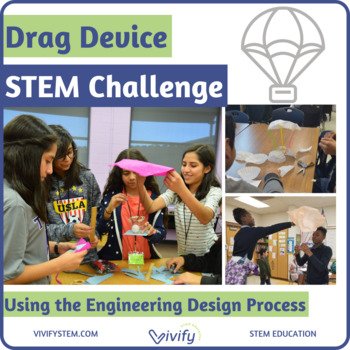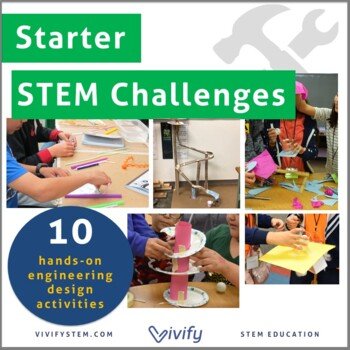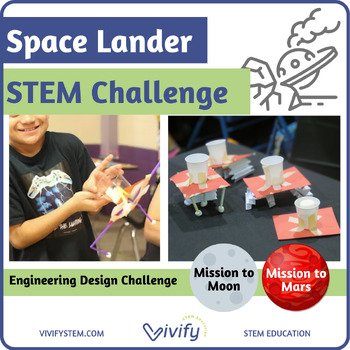Catapult Challenge
By: Natasha Wilkerson
December 23, 2014
Updated: February 2024
After years of STEM activities, including towers, bridges, race cars, and rockets, one my favorites is the classic catapult challenge! I believe it incorporates all aspects of a quality STEM activity: easy math connection, engineering design process, student-driven learning, and hands-on fun! Read on to see my ideas to incorporate catapults into your classroom.
The Challenge
Your Mission: Design and build two catapults from common materials. Each catapult will undergo three different tests to determine accuracy, distance, and power.
I have tried several versions of this challenge with my middle school students, and I believe the most successful activity is to have students build two catapults. Working in teams, students brainstorm ideas, select the top two designs, and complete three tests to determine the winning design. Ensure students have a key design difference between the two such as a different base, launcher, or axle.
Set-up
The best way to set-up the activity is to show pictures and videos of various catapult designs. Discuss what are the basic features of a catapult. Great resources include: TeachEngineering, Science Behind Catapults, and The Physics of Pumpkin Chunking Video. I also encourage reviewing the engineering design process and stressing the importance of testing. I really like this PBS resource on using the engineering design process for STEM challenges.
Materials
To determine a materials list, I researched several ways to build a catapult and experimented at home. I decided to have the following available during the project:
Magazines/newspapers
Popsicle sticks (thick and thin)
Masking tape
Scissors
Plastic cups
Coke cans
Rubber bands (various sizes)
Soup cans
Plastic spoons
Bottle caps
You can make all materials available to students or incorporate budgeting by adding a price tag to each supply. I kept it simple by making all supplies available, and I had no issues. Once you introduce the various supplies, I found giving a couple of examples important. I demonstrated how to make a simple Coke and rubber band catapult and highlighted the main features. Encourage students to think outside the box with the supplies provided! Here are some of their creations:
Testing Stations
Once students have built their catapults, it is time to launch! These three stations can be adapted to your space, but ensure students record results as they go.
Station 1 - Accuracy: Cotton balls and a bowl make-up this station. The bowl will be in a set location (works well on the floor). Teams will have 2 test runs to determine launching distance. Then, from a set distance, students will launch their cotton balls. Record how many make it into the bowl out of 5 attempts.
Station 2 - Power: Mini marshmallows work great for this one. Set-up a launch line using masking tape. Students launch 3 times per catapult and record each distance using a measuring tape. If it is too much hassle to record the distance, have students launch both catapults and mark which one went farthest for each trial.
Station 3 - Tower: Build a tower out of small plastic cups. Mark a set distance of about 3 feet that students must launch behind (they can go farther back). Use beans or a heavier item to knock over the tower.
Students will have a blast with this challenge! I love seeing all the creative designs, and you can see a sample in the picture below.
Math Connection
A great part of the catapult challenge is the ease of adding math to the activity. You can download our product for handouts that include the stations above, along with math problems.
Students graph distance results for all the catapults in the class.
Students find the average of the three trials.
Students determine how the angle of the launch (how far back they pull the launcher, usually a spoon) affects the distance.
Add a holiday theme!
I love using catapults to celebrate different holidays from Valentine’s Day flying hearts to a pumpkin chunkin’ Halloween challenge! Check out our different versions below to bring some STEM into your classroom.
Looking for more STEM activities for your classroom or program? From icebreakers to engineering design challenges, we have a variety of activities tailored for elementary and middle school grades. Check out our most popular STEM challenges below!
Have fun launching!
-Natasha











